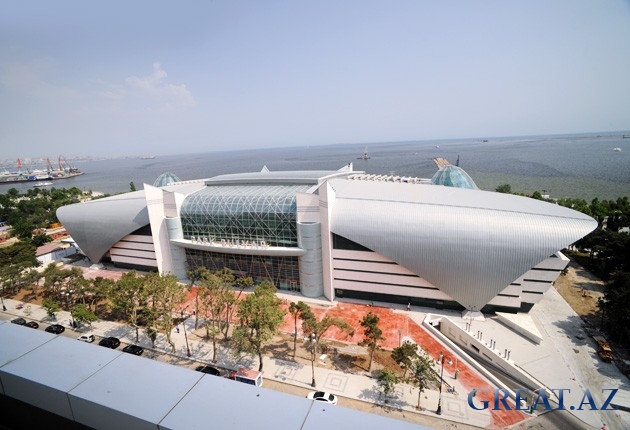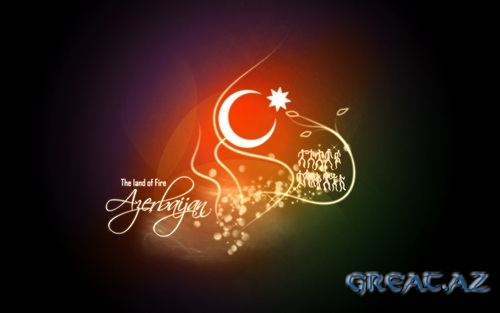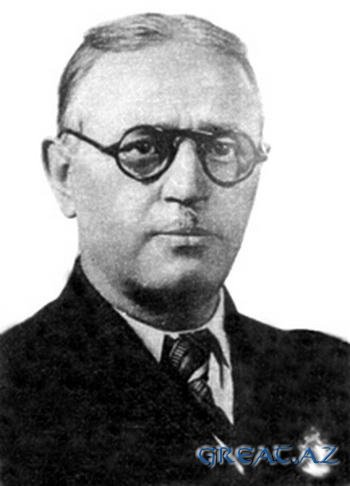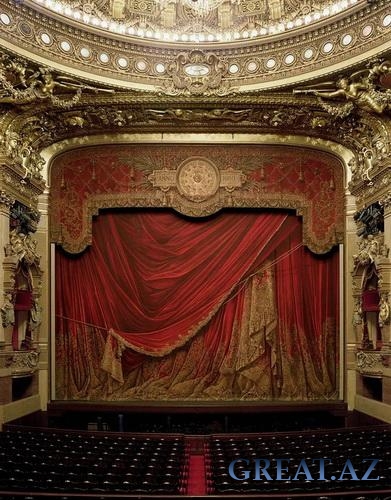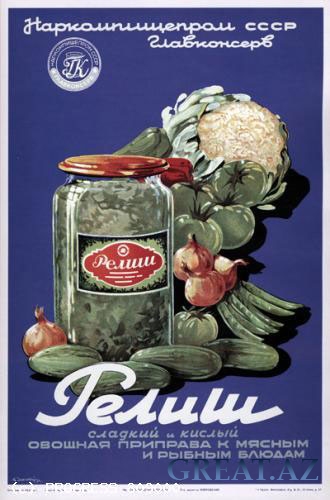Azerbaijan State Academic Opera and Ballet Theater
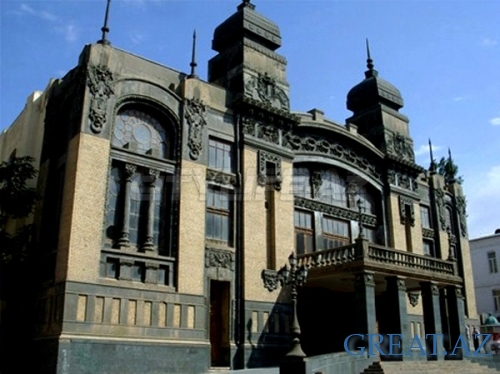
Theatrical life in Baku, the Capital city of The Republic of Azerbaijan has a long history, and the Opera and Ballet House is the oldest of the theaters. For a whole century the theatre has been one of the centres of the republic’s cultural life and the focus of the best in opera and ballet in Azerbaijan
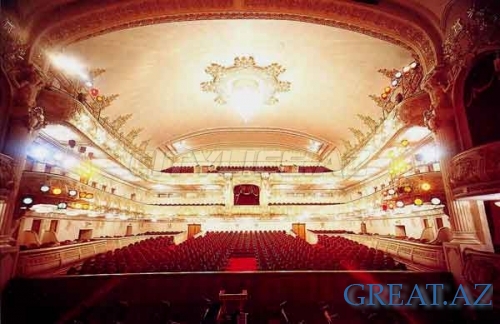
The development of national opera is inseparably linked with the founder of Azerbaijan professional music, the famous composer Uzeir Hadjibekov. On January 25, 1908 his first opera “Leyli and Mejnun“ ( based on the works of the great Azerbaijani poet Fizuli ) was premiered marking the beginning of Azerbaijan opera.The success of the opera was not unexpected – the genre which was new to both Azerbaijan and the whole Eastern art music was nevertheless based on well established national traditions in music.The links between Azeri opera and folklore music are obvious. This was the beginning of the era for the future composers and their works. The following is a brief history about some of these outstanding people and their masterpieces.
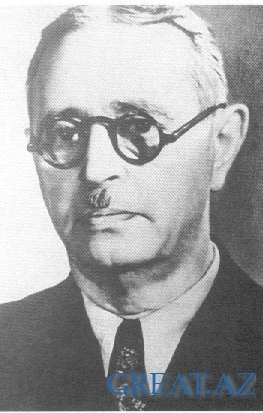
Uzeir Hadjibekov ( 1885-1948 )
Uzeir Hadjibekov was an outstanding Azeri composer, pedagogue and public figure. He is the founder of Azeri professional music and one of the founders of Azeri musical theatre. Hadjibekov was the author of the first Azeri operas, including six mugam operas, among them “ Leyli and Mejnun “ (1908) and the pinnacle of his operas “ Koroglu “ (1937); He also wrote musical comedies, including “ Arshin Mal Alan “ (1913), cantatas, compositions for orchestra and for chorus, chamber-instrumental compositions, romances and songs. Hadjibekov’s adherence to national traditions and combining them with the achievements of world culture created the basis which gave rise to a school of national Azeri composers which today enjoys a world wide reputation.
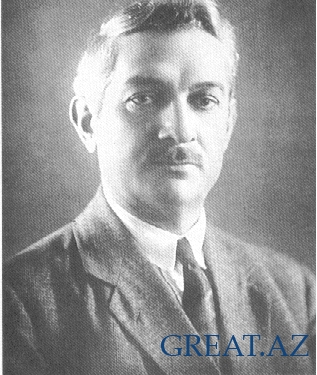
Muslim Magomayev (1885-1937)
The closest associate and confederate of Uzeir Hadjibekov was the prominent musician Muslim Magomayev. “He was a national composer in respect to spirit and aspiration, “wrote U. Hadjibekov,
“a genuine realist and a brave innovator mercilessly breaking all the obstacles in the path of Azeri arts.”
Besides “ Shah Ismail “ , Magomayev wrote the opera “ Nargiz “ (1938) with a revolutionary theme, as well as compositions for orchestra, numerous songs, music for dramatic performances and many others.
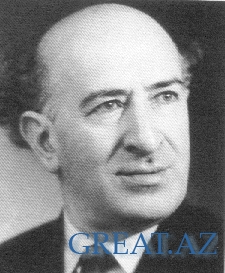
Bul-Bul (1897-1961)
Bul-Bul was a well-known Azeri singer (lyrical-dramatic tenor), pedagogue, and the founder of the Azeri professional vocal school. Bul-Bul is a whole epoch in the history of Azeri music. Having synthesized the best traditions of national and European songs, Bul-Bul founded a new vocal school in Azerbaijan, which had a great impact on the cultural life of the Middle East. Bul-Bul was the leading singer in the main parts of almost all Azeri operas, but he reached the pinnacle of his creative activity singing Koroglu in U.Gadijbekov’s opera of the same name.
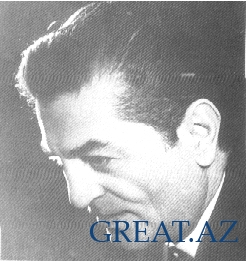
Niyazi (1912-1984)
The prominent Azeri conductor and composer, Azerbaijan State Prize Laureate, J.Neru Prize Laureate. Niyazi widely propagandized Russian and Western European classical music. He was the first interpreter of many compositions of Azeri composers. Niyazi’s tireless activity was a significant contribution to the promotion of Azeri music all over the world. As for Niyazi’s activity as a composer, he wrote the opera “Khosrov and Shirin”, the ballet “Chitra”, as well as other works of symphonic and chamber music. According to one of famous Russian composer D.Shostakovich, “we can certainly state that one of the musicians to whom Azeri music owes its world-wide acknowledgment, is the gifted conductor and composer Niyazi”.

Kara Karayev (1918-1982)
A prominent Azeri composer, pedagogue and public figure. His compositions enhance the repertoire of musical theatres, as well as the concert programmes of the best conductors and musicians in the world. Each composition of Kara Karayev is a new accomplishment, a new stage in the development of Azeri music. Karayev’s music is truthful, emotionally tense and passionate art of genius. K. Karayev is the author of two ballets- “Seven Beauties” and “The Path of Thunder”, three symphonies, a violin concerto, symphonic poems, numerous chamber and vocal compositions, and music for dramatic performances and films. As a prominent pedagogue, K.Karayev has tried a whole generation of Azeri composers who are famous far beyond the borders of Azerbaijan.
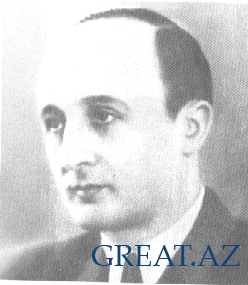
Fikret Amirov (1922- 1984)
A prominent Azeri composer and public figure, Fikret Amirov is Azerbaijan State Prizes Laureate. “F. Amirov possesses a generous gift for composing melodies. Melodies are the soul of his works. In his works the composer widely uses folklore and the direct impact of Azeri folklore on Amirov’s music is quite obvious”. This statement of Shostakovich to some extent determines the sources of Amirov’s creative activity. F.Amirov is the author of numerous compositions, including the opera “Sevil”, the ballets “1001 Nights” and “Nizami”, and the symphonic mugams. He also wrote music for dramatic performances, chamber-instrumental compositions, romances and songs.
The best conductors of the world Stakovsky, Munch, Abendrot, Rozhdestvensky, Niyazi – have interpreted his works. Having captured the hearts of people in many countries, F.Amirov occupies a place of honour in world music.
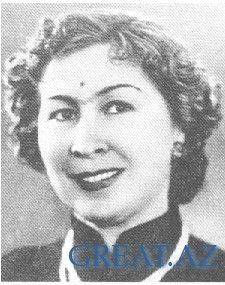
Gamar Almaszadeh (1915)
Gamar Almaszadeh was a prominent Azeri ballerina, pedagogue and ballet master. She was Azerbaijan State Prize Laureate. G.Almaszadeh was the first ballerina in the East to create a whole range of unforgettable characters among whom were Odetta-Odiliya (“Swan Lake”), Kytry (“Don Qioxote”), Tao-Hoa (“The Red Flower”), Aysha (“Seven Beauties”) and others. G.almaszadeh produced the ballets “Laurensia”, “Doctor aybolit”, “Shopeniana” and “Arlecinada” at the opera and ballet house. But “The Maiden Tower” by A.Badalbeyli and “Gulshan” by S.Gadjibekov are considered the pinnacles of her career as an actor; G.Almaszadeh trained a great number of talented ballet dancers.
Operas
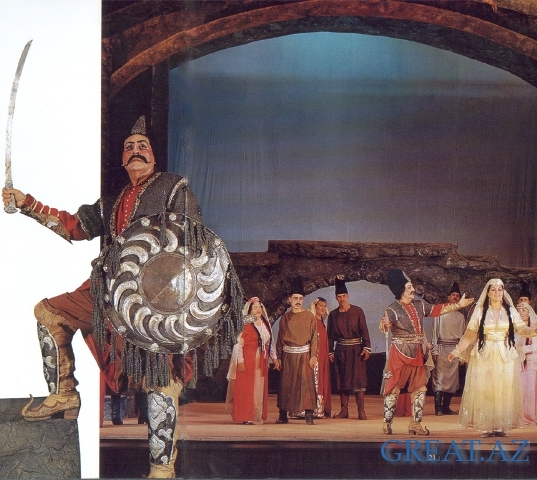
Koroglu
The opera “Koroglu” by Uzeir Gadjibekov is the greatest achievement in Azeri opera. It was premiered in Baku on April 30, 1937 by the producer E. Hydayatzadeh. It was conducted by the author himself. The part of Koroglu was performed by the prominent Azeri singer Bul- Bul. Gadjibekov’s opera is the most famous musical performance in Azerbaijan. Since its premiere, “Koroglu” has always been performed at the Azerbaijan State Academic Opera and Ballet House attracting large audiences. The success of Koroglu during the decade Azeri art in Moscow in 1938 demonstrated that this brilliant work of art is valuable contribution to the treasury of world opera. The action of the opera is based on a well-developed and purposeful dramatic scheme. The completed acts (arias, dances, chorus, and songs) are organically included into big scenes with rapidly developing action. Talking about the style of his opera, U.Gadjibekov mentioned that his idea was not to borrow ready- made folklore melodies: “it was important to enrich the opera with traditions of national music”. The language of the opera is clear and harmonic. The orchestral music is very expressive. Many symphonic episodes in the opera are examples of programme descriptive music in Azeri symphonic literature. The progressive character and realism of the opera “Koroglu”, its adherence to national traditions and the unity of the whole composition determined the huge popularity of Gadjibekov’s opera, as well as its exceptionally important historic and cultural significance.
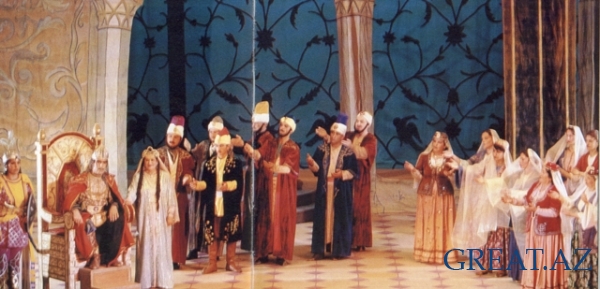
Shah Ismail
The opera “Shah Ismail” was the first large- scale work written by Muslim Magomayev. It was premiered in 1919 with great success. But in spite of this, Magomayev edited it three times. In its last edition, “Shah Ismail” is an example of historic legendary opera. It has many striking dramatic scenes. The composer tried to use in this opera all the main elements of a classical opera: arias, ensembles, recitatives, polyphonic chorus, etc. he left improvised parts in the opera, and achieved their organic unity with the original material so that the opera sounded like a single-style musical-theatrical work of art. The prominent modern composer Kara Karayev created a new edition of the opera which was staged in 1987. At present, Muslim Magomayev’s own edition of the opera is being performed.

Ashug Garib
In 1916 Zulfugar Gadjibekov, continuing the series of mugam operas, wrote “Ashug Garib”. This opera, like many others, glorifies true love. Ashug Garib praises beauty and love, and overcomes all the obstacles in his path. Like in previous operas, here the heroes improvised in the mugam tunes, indicated by the composer. He notated in music the chorus, dances, small instrumental episodes written on the basis of folklore themes.

The Bridal Rock
This opera occupies an important place among the works of the Honoured Art Worker Shafiga Akhundova, one of the first professional female composers of Azerbaijan. It was staged in 1974 by the People’s Artist of Azerbaijan, the conductor R. Abdullayev. “The Bridal rock” is a lyrical drama. The plots combines motifs of numerous folklore tales praising faithfulness, undying love, and the struggle of people in love against the despotism and tyranny of rulers. “Love is solid like a rock, it will collapse, but will not betray”, exclaims the dying heroine of the opera, Gulbahar. The composer actively used the genre characteristic of folklore songs, dances and mugam improvisations. After a long period of time: “The Bridal Rock” was performed again in 1992.
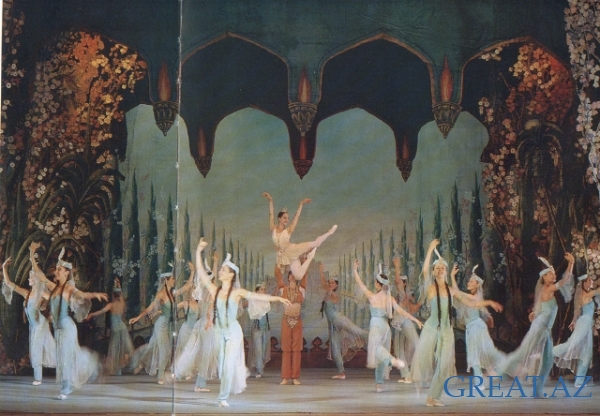
The Maiden Tower
The premiere of “The Maiden Tower”, a ballet by the prominent Azeri composer, the People’s Artist of Azerbaijan A. Badalbeyli, was on April 10, 1940 in Baku, marking the birth of national choreography. Since that time A. Badalbeyli’s ballet has remained firmly in the repertoire of the theatre. It has been successfully performed twice in Moscow, as well as in other cities of the world. The ballet was produced by the prominent Azeri ballet dancer, G. Almaszadeh, who played the main part of Gulyanak. After many years, evaluating the importance of “The Maiden Tower”, the well-known Azeri composer S. Gadjibekov wrote: “following the path set by U. Gadjibekov, the then young composer gathered and carefully edited a great number of wonderful folklore melodies, which thus acquired new attractive qualities. After being set to orchestral music, these folklore melodies organically joined Badalbeyli’s music, composed in the spirit of national folklore songs and dances. The new ballet was an answer to a very important problem, the organic synthesis of folklore dance with classic dance. And that was a correct and progressive beginning in the formation of national choreography. In “The Maiden Tower” and old Eastern legend shone with new colours.

Seven Beauties
This ballet was planned by Kara Karayev from1947 to 1948 in connection with the 800th Anniversary of the great Azeri poet and thinker Nizami. The author of the libretto was the well-known ballet theorist Yuri Slonimsky. The ballet was premiered at the Azerbaijan State Academic Opera and Ballet House on November 6, 1952. It was produced by P.Gusev, a ballet master from Leningrad. At the end of the 70s, the Azeri choreographers, People’s Artist of Azerbaijan, R. Akhundova and M. Mamedov created a new version of “Seven Beauties”. It was premiered at the same theatre in the winter of 1978 during the celebration of the 60th anniversary of the great composer Karayev. “Seven Beauties” is a brilliant achievement in the national music and also belongs among the masterpieces of the world ballet. In the fairy-tale about the life of the legendary king Bahram-Gur written by Nizami, the composer revealed the philosophical idea of moral and ethic heroism in the name of love. How rich and expressive is the palette of the composer! With the perfect instinct of the dramatist he has described the forces in conflict and set them to music; and with such skill is the plot developed and brought to its climax. Many are the bold, brilliant ideas contained in the ballet, which have enriched the national ballet through the synthesis of specific dance music with symphonic principles.
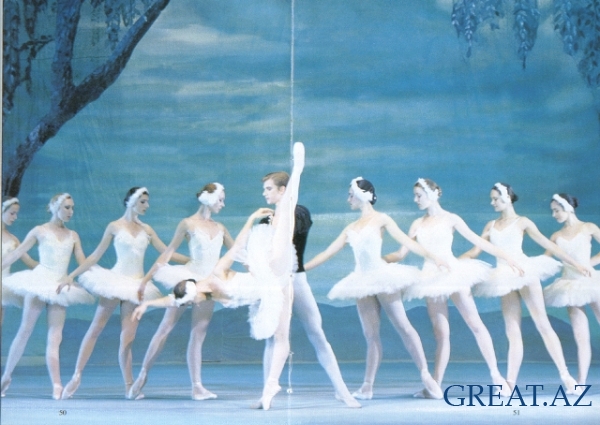
Swan Lake
It would be difficult to imagine a ballet troupe whose repertoire did not include “Swan Lake”, the work of genius of the great Russian composer Tchaikovsky, which is considered to be one of the masterpieces of classical ballet. Regretfully, the composer did not live to see its premiere. It took place in 1895 when the well-known ballet masters Petipa and Ivanov created the classical dance version of the performance. However, like any other work of genius, Tchaikovsky’s music has endless possibilities. “Swan Lake” was staged in Baku in 1940 in the choreographic version of G.Almaszadeh. This version was a new approach to the undying work of the great Russian composer.

1001 Nights
In 1979 Fikret Amirov wrote the ballet”1001 Nights”. It was produced by the People’s Artist of Azerbaijan. The ballet master N.Nazirova, who wrote the libretto together with Magsud and Rustam Ibragimbekov. The stage artist was Togrul Narimanbekov, the costume designer was Tair Tairov, and the conductor was People’s Artist of Azerbaijan, Nazim Rzaev. An admirable quality of F.Amirov’s ballet is its colourful and generous orchestral music, as well as the depth and intensity of its characters. Due to these qualities the ballet has full stage life.
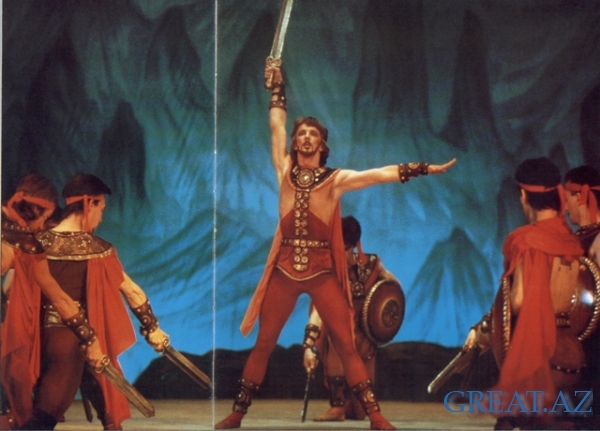
Babek
Babek – a ballet by the well-known Azeri composer, A. Alizadeh was produced in 1986 in a choreographic version by the People’s Artist of Azerbaijan R.Akhindova and M. Mamedov who were also authors of the libretto. The stage artists were Tair Salahov and Tair Temrov, the conductor was People’s Artist of Azerbaijan, Rauf Abdullayev. Babek was a historical figure of Azerbaijan. In the 9th century he led a rebellion against the Arab caliphate and local feudal lords. Babek’s long struggle has implanted in the hearts of Azeri people hatred against enslavement. Babek is a symbol of the struggle for freedom.
